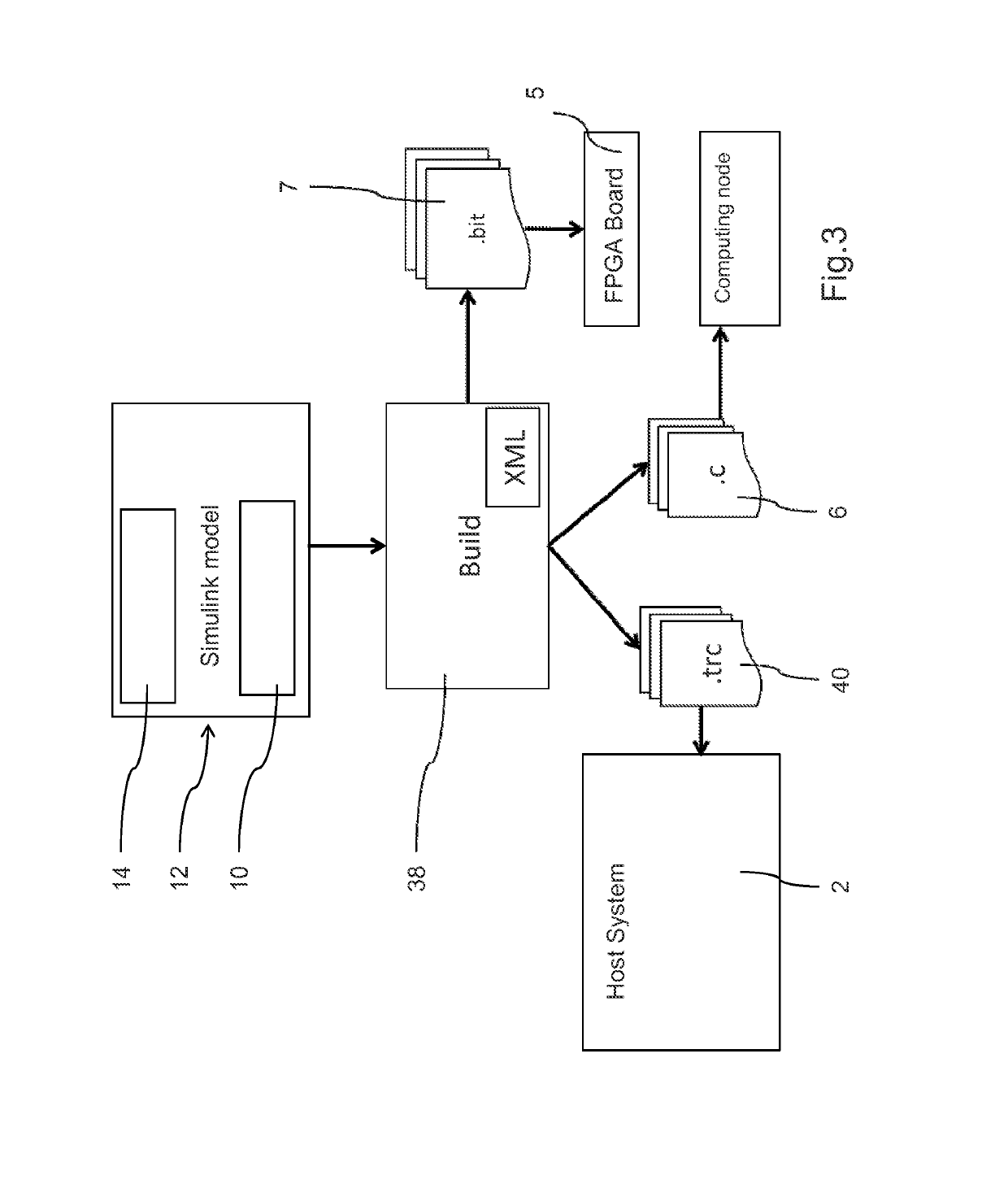Implementing a constant in FPGA code
a constant and fpga code technology, applied in the field of implementing constants in fpga code, can solve the problems of high demands on even modern computing nodes, dynamic models that are virtually impossible to achieve in practice now with cpu-based simulations, and the complexity of simulated environment models can become ever more precise and complex, etc., to achieve easy and efficient generation of fpga code, easy and efficient use, and high degree of freedom from errors
- Summary
- Abstract
- Description
- Claims
- Application Information
AI Technical Summary
Benefits of technology
Problems solved by technology
Method used
Image
Examples
Embodiment Construction
[0054]FIG. 1 shows a configuration according to the invention of a data processing system 1 with a control computer 2, here also labeled as host system, and a real-time system 3. The real-time system 3 is connected to the control computer 2 through a network connection that is not explicitly shown.
[0055]The real-time system 3 comprises a computing node 4 with a CPU that is not shown, and an FPGA board 5, which in this example embodiment is a Xilinx FPGA. The real-time system 3 here is any desired data processing device upon which a CPU application is executed as CPU code 6. FPGA code 7 is executed on the FPGA board 5. The FPGA board 5 is implemented with a plurality of I / O ports 8.
[0056]Control software 9 is executed on the control computer 2; in this example embodiment it is dSPACE ControlDesk software. The ControlDesk 9 communicates with the real-time system 3 through the computing node 4, as shown in FIG. 1.
[0057]FIG. 2 shows a method for generating the FPGA code based on an FPGA...
PUM
 Login to View More
Login to View More Abstract
Description
Claims
Application Information
 Login to View More
Login to View More - R&D
- Intellectual Property
- Life Sciences
- Materials
- Tech Scout
- Unparalleled Data Quality
- Higher Quality Content
- 60% Fewer Hallucinations
Browse by: Latest US Patents, China's latest patents, Technical Efficacy Thesaurus, Application Domain, Technology Topic, Popular Technical Reports.
© 2025 PatSnap. All rights reserved.Legal|Privacy policy|Modern Slavery Act Transparency Statement|Sitemap|About US| Contact US: help@patsnap.com



